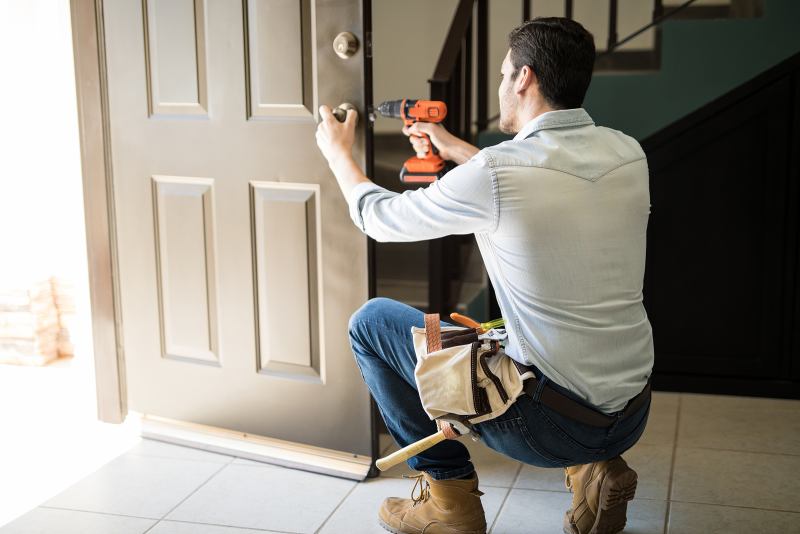
A misaligned strike plate, will make it almost impossible to close your door because the door latch won't properly engage the strike plate. Also, a misaligned strike plate will breach your privacy if it affects an internal door or poses a security risk to your home if the front door is affected.
Thus, it is important to fix the misalignment of a strike plate once you notice it. You can lock your door without a hassle and don't have to sleep with one eye open. In this article, we highlight how you can adjust a misaligned strike plate back into position.
Before you can fix a misaligned strike plate, you have to first determine the direction to correct the alignment. To achieve this, bring out the latch and apply lipstick, chalk or paint on it. After which, close the door and reopen it. Then you will notice the mark left on the strike plate to perform the adjustment.
For minor misalignment, you can easily fix it by loosening the strike plate screws and then gently tapping the plate in the direction it needs to be adjusted. The next step is to hold the plate in place and tighten back the screws. After doing this, test the door to see if the latch now easily reaches the strike plate hole.
For extreme misalignment, you will have to move the strike plate to a different location. Performing this adjustment will permanently damage the current jamb and its aesthetics. So, if you are concerned about aesthetics, you will have to purchase a new jamb.
If the latch bolt is hitting the strike plate either too high or low, adjust the plate down or up respectively. Then make use of a pencil or marker to trace out the new location of the strike plate and mark it down for later.
The strike plate or its template should be used to mark the depth of the mortise on the jamb. To have a comfortable fit, the mortise's depth should be slightly deeper than the strike plate's thickness. After which, use a well-sharpened chisel to widen the mortise on the jamb. This should be done following the specified outline that will accommodate the new location of the strike plate.
After you have chiseled the jamb as required, ensure the new position of the strike plate aligns appropriately with the latch. Then drill new screw holes to secure the plate in its new position. However, before drilling the new holes, fill the old holes with wood filler. This is to ensure that they don't affect the new holes.
Once you are done, close the door and test the latch to confirm that it is aligned properly with the strike plate. If the latch smoothly catches into the plate, the procedure was a success. If it doesn't, then you need to seek professional help from GreenPro Locksmith.
While the above DIY procedure can help you adjust the strike plate, if it is not done correctly you might end up worsening the situation. To avoid damaging the security of your home, work with a vetted local locksmith.
When you need a spare key, the process may seem straightforward: visit a hardware store or locksmith shop,…
Most people do not give their locks much consideration until they develop issues that may be expensive to resolve. Perhaps you…
If you have ever contacted a locksmith to replace a lock, you might wonder how the process works. Hiring a professional…
Locksmithing has never been about fixing a jammed door. And though resolving a lockout is certainly a significant part of their…